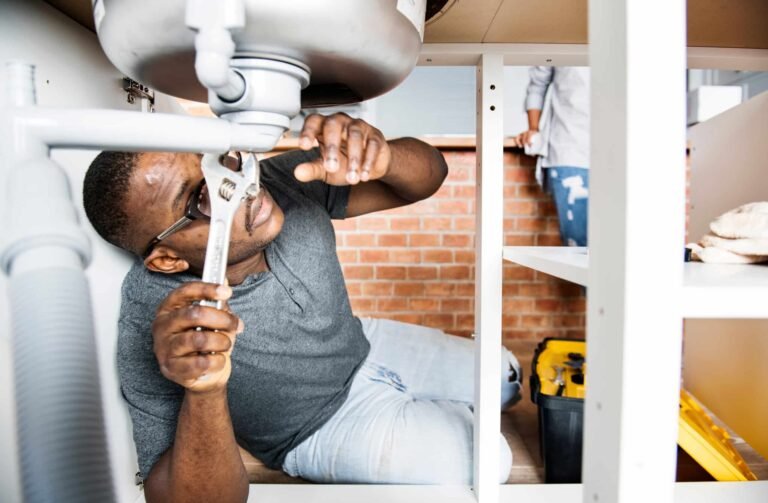Bathroom Furniture Market: Key Insights, Trends & Future Outlook
The global Bathroom Furniture Market Size reached an impressive value of approximately USD 68.19 billion in 2023 and is anticipated to grow at a compound annual growth rate (CAGR) of 6.30% from 2024 to 2032. By 2032, the market is expected to reach around USD 116.18 billion. This growth is driven by increased investments in home renovation, a shift toward luxury-oriented bathroom decor, and rising disposable incomes worldwide.
Key Benefits of Bathroom Furniture
- Enhanced Functionality: Bathroom furniture, such as vanities, cabinets, and storage units, enhances bathroom organization, creating a clutter-free environment.
- Aesthetic Appeal: Modern bathroom furniture comes in diverse styles and finishes, allowing homeowners to personalize their bathroom space.
- Value Addition: Quality bathroom furniture can significantly increase the value of a property, appealing to potential home buyers and investors.
- Improved Space Utilization: Well-designed bathroom furniture helps maximize the available space, making even small bathrooms feel more spacious and functional.
Key Industry Developments
The bathroom furniture market has seen considerable advancements in the following areas:
- Sustainable Materials: Many companies are shifting towards eco-friendly materials, such as reclaimed wood, bamboo, and recycled metals, aligning with the growing consumer preference for sustainable products.
- Smart Bathroom Furniture: Technological integration is on the rise, with smart cabinets featuring built-in lighting, mirrors with LED displays, and even furniture with temperature control features.
- Modular and Customizable Furniture: Companies are offering modular designs that allow consumers to mix and match pieces, providing greater customization options for tailored bathroom spaces.
Driving Factors
- Growing Home Renovation Trends: Increasing interest in home improvement and renovation is a significant driver for the bathroom furniture market. Homeowners are investing in high-quality furniture to enhance bathroom aesthetics and functionality.
- Rise in Disposable Incomes: As disposable incomes increase, particularly in emerging markets, consumers are more willing to invest in luxury bathroom furniture, contributing to market growth.
- Urbanization and Real Estate Development: Urbanization has led to increased housing projects, further driving the demand for bathroom furniture in both new and remodeled bathrooms.
- Increased Awareness of Bathroom Aesthetics: Consumers are increasingly considering the bathroom a wellness space rather than just a utility, leading to higher investments in furniture that aligns with comfort, relaxation, and style.
Restraining Factors
- High Costs of Premium Furniture: Premium bathroom furniture can be expensive, limiting its adoption among budget-conscious consumers.
- Economic Volatility: Fluctuations in the economy can affect consumer spending power, impacting the demand for non-essential, high-end bathroom furniture.
- Limited Awareness in Developing Regions: In some emerging markets, the awareness and adoption of sophisticated bathroom furniture are lower due to economic constraints and cultural preferences.
Market Segmentation
The bathroom furniture market can be segmented based on the following criteria:
- Product Type: Vanities, cabinets, shelves, mirrors, and other furniture items.
- Material: Wood, metal, glass, and plastic.
- Distribution Channel: Online, offline (specialty stores, hypermarkets, and home improvement stores).
- End User: Residential, commercial (hotels, spas, and offices).
Market Outlook
The bathroom furniture market is positioned for consistent growth over the forecast period, fueled by evolving consumer preferences, ongoing technological advancements, and greater customization options. The shift toward sustainability and smart homes is also expected to introduce new opportunities for market players.
Trends in the Bathroom Furniture Market
- Eco-friendly Furniture: As consumers become more environmentally conscious, there is a growing demand for furniture made from sustainable and recycled materials.
- Smart Features: The integration of technology, such as mirrors with LED touch controls and cabinets with temperature control, is increasingly popular.
- Minimalist Designs: Many consumers prefer minimalistic, sleek, and space-saving designs that offer a modern touch without occupying excessive space.
- DIY and Modular Furniture: The popularity of modular furniture kits has enabled consumers to create custom bathroom spaces with ease, catering to both large and small bathrooms.
Regional Analysis/Insights
- North America: The market in North America is strong due to the high level of home ownership and robust demand for premium and luxury bathroom furniture. Sustainable bathroom furniture is particularly popular in the U.S. and Canada.
- Europe: With its well-established real estate market and high demand for sustainable products, Europe is a significant player in the bathroom furniture market. Countries like Germany, the U.K., and France show high demand.
- Asia-Pacific: The fastest-growing region, driven by rapid urbanization, rising disposable incomes, and increasing awareness of luxury home furnishings, particularly in China and India.
- Latin America and the Middle East & Africa: Growth in these regions is slower but steadily increasing due to the expansion of the real estate sector and gradual rise in income levels.
Top Impacting Factors
- Consumer Preferences for Customization and Personalization
- Advances in Sustainable Manufacturing
- Expansion of Real Estate and Home Renovation Projects
- Technological Innovations in Smart Bathroom Furniture
- Rising Popularity of E-commerce for Furniture Purchases
Target Audience
- Homeowners
- Interior Designers and Decorators
- Real Estate Developers and Contractors
- Hospitality Industry (hotels, resorts, spas)
- Retailers and Distributors
Major Key Players
The bathroom furniture market features a range of prominent players, including:
- Inter IKEA Systems B.V.
- Villeroy & Boch AG
- Duravit AG
- Foshan SHKL Sanitary Ware Co., Ltd
- Grohe AG
- Ideal Standard International NV
- Ceramica Catalano Spa
- Geberit ADR
- Roca Sanitario S.A.
- Cersanit S.A.
- Laufen Bathrooms AG
- Others
Opportunities
- Growth in Emerging Economies: As economies in Asia-Pacific, Latin America, and the Middle East improve, there is significant potential for bathroom furniture companies to expand their customer base.
- Sustainable Products: There is an increasing demand for eco-friendly products. Companies offering sustainable bathroom furniture stand to capture a substantial market share.
- Innovative and Smart Features: Technological advancements in bathroom furniture present opportunities to attract tech-savvy consumers interested in modern and automated solutions.
Challenges
- Intense Market Competition: The bathroom furniture market is highly competitive, with numerous regional and global players vying for market share.
- Supply Chain Disruptions: Volatile raw material costs and supply chain challenges can impact production and distribution, particularly affecting small and medium-sized players.
- Economic Downturns: Economic fluctuations can reduce consumer spending on home improvement products, including bathroom furniture.
Restraints
- High Costs of Premium Products: Despite the demand for premium furniture, high costs may deter price-sensitive consumers.
- Raw Material Volatility: Fluctuations in the cost of raw materials, particularly wood and metals, can affect manufacturing costs and profitability for bathroom furniture companies.
Scope
The bathroom furniture market has substantial scope for innovation, particularly in:
- Sustainable Furniture Manufacturing: As environmental concerns increase, sustainable production practices are becoming a key area of focus.
- Customization Options: Offering customizable options allows companies to cater to consumers’ diverse preferences, enhancing the customer experience.
- Technological Integration: There is significant scope for the integration of smart features, which can add convenience and modernity to bathroom spaces.






